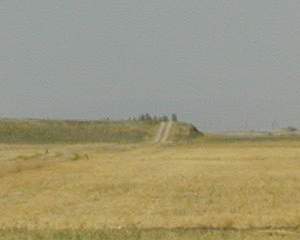Archaeo-Anthropology at Çatalhöyük 1995-2001
David ShanklandAt the end of August, I left the site with a feeling of sadness. Not just because it seemed to me that a profoundly important season of discussions and research had thereby, for me at least, drawn to a close but it marked also the conclusion of a project that I had been pursuing from 1995. The work of a social anthropologist is usually less drawn out - a year, two years in the same place followed a decade perhaps of slowly writing up results. This time, though, in order to synchronise as much as possible with the archaeological research, I had worked initially intermittently over each summer, each season gradually growing more intense as the research took shape. Finally, through the support of the British Economic and Social Research Council, I was able to devote myself, finally, in conventional anthropological fashion to the same research for a full, sustained year, a year that I was able to stretch to overlap with the two excavation seasons in 2000 and 2001. Thus, my personal exploration coincided with the culmination of the first major excavation phase of the project in this years' discussions, the two mirroring each other and drawing to a close at the same moment.
What have I learnt from this experience? Well, a first and foremost a conviction that anthropologists can only gain by working with archaeologists. More and more, it seems to me that the development of social anthropology as a distinct, independent discipline was an exciting venture nevertheless as intellectually destructive as it was creative - destructive not least in the separation of the two disciplines that came to be insisted upon by the Malinowskian school. This project marked my own, albeit very small, effort to redress this imbalance by becoming familiar with archaeological ways of doing things. Still, I should also confess that from the research point of view the anthropological insistence of working not in seasons, but in whole years, paid off. Only at the end of that long final period did I feel that the different bones of the work had finally fallen into place.
And these results? It is early days to digest the final, intense periods of field study. Briefly, though, I think that I shall suggest that the Republican nationalist insistence on the multi-period exploration of Anatolian archaeological heritage coincided and has interacted with a traditional fom of tolerant village Islam that was partially dependant on the same brotherhoods, the tarikat, that are now banned. As a result, there has developed a curious, rather unstated arrangement by which mystical folk Islam of the Mevlana and of Yunus Emre is lauded for its pluralism, its humanism, and its universalism whilst the social structures (the brotherhoods) that engendered that same thought system in Anatolia remained proscribed.
Where does this leave the remains of the past - the mounds, the stones, the graves scattered in the village landscape? I think somewhere in the middle - they are protected by the state, kindly regarded by most villagers, the occasional object of suspicion by the pious, and sadly (leaving ideological matters momentarily aside) the innocent victims of a massive mechanisation and intensification of farming methods. |
 Figure 23: the mound of Kizilhöyügü, its side side levelled for ploughing. |
We can hardly turn the clock back, but as my writing progresses, I note with sadness once more the sheer quantity of material that is lost through this ploughing and industrialisation of the Konya plain. Perhaps, I think, musing the dozens of broadly untouched, albeit often partially damaged, large mounds, the Republican interest in things archaeological could be extended to making the whole region a world preservation site? After all, that would, at the same time, provide endless new material not just for archaeologists but also for the now bereaved anthropologist. On this slightly more cheerful note, I turn to the 'final report' for the research council, and hope for the best for my return, one day at least, to the region.